May 2025
Taxi Driver is a gritty movie set in a gritty period of New York’s history.
In the 1976 Martin Scorsese movie, Robert de Niro has three scenes in a diner. Two are shot during the day – one with Jodie Foster and one with Cybill Shepherd. The third is a nighttime scene, with De Niro joining a table of fellow cab drivers.
Every one of the Taxi Driver diner scenes was shot in Hector’s Café and Diner, a real place that was open all hours in the 1970s, serving coffee and meals to meatpackers, pimps, drug dealers and cabbies in New York’s meatpacking district.
Early episodes of Law & Order were also filmed here.
Hector’s was chosen as a setting because it represented old New York. Opened in 1949, Hector’s used to serve breakfast at 2am, mainly to meat workers on their way to work.
In the 1930s, the meatpacking plants in this neighbourhood of Manhattan produced one-third of the country’s meat.
In the late 1970s and early 1980s, when Taxi Driver and those early Law & Order episodes were filmed, the Meatpacking District was crime-ridden.
Hector’s is still open today.
I went there this year.
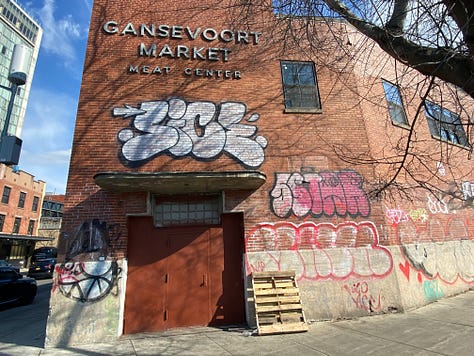
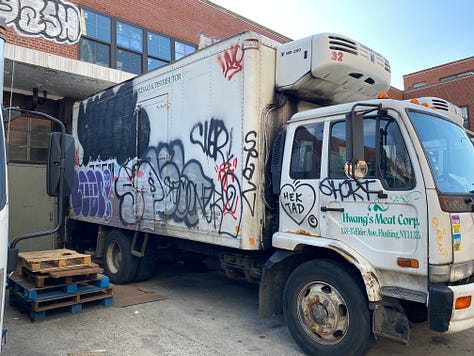
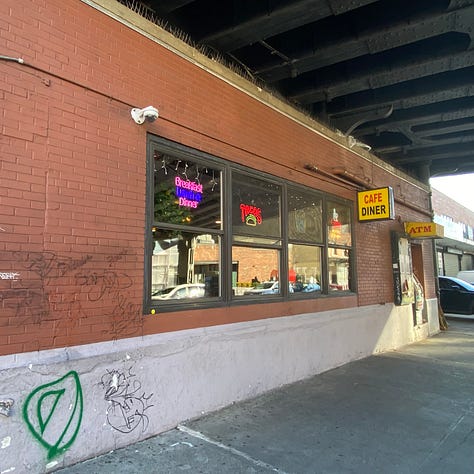
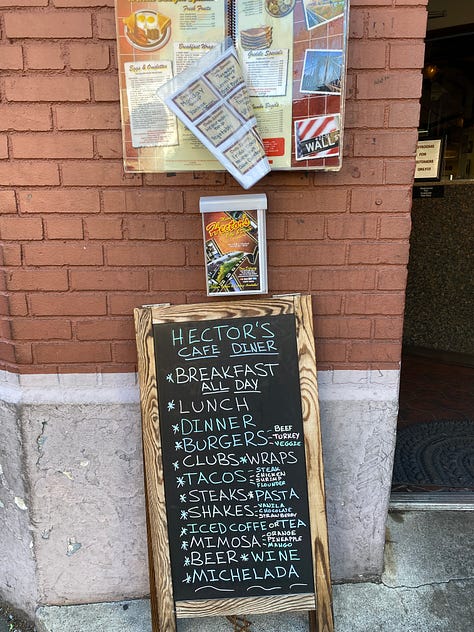
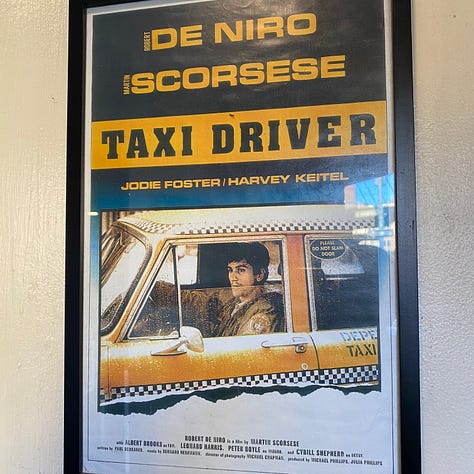
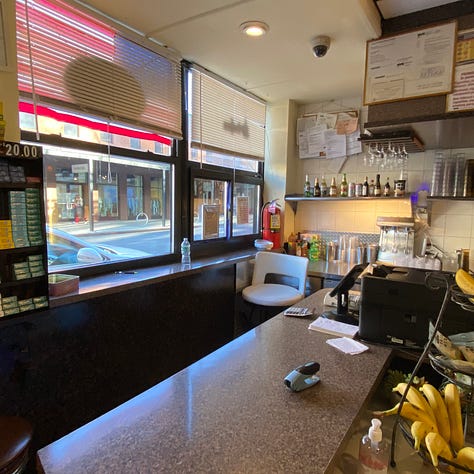
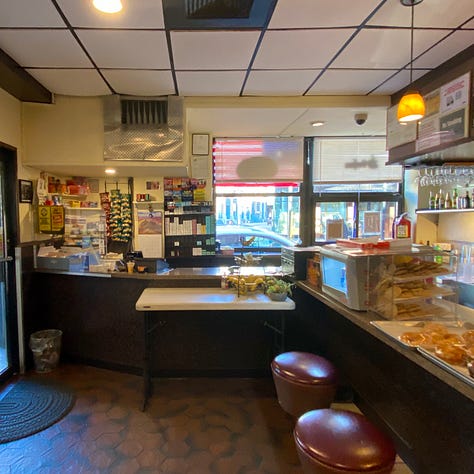
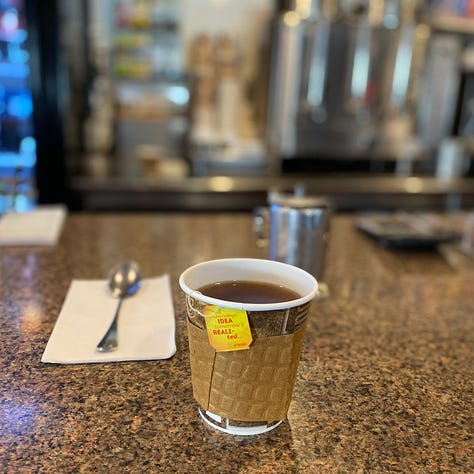
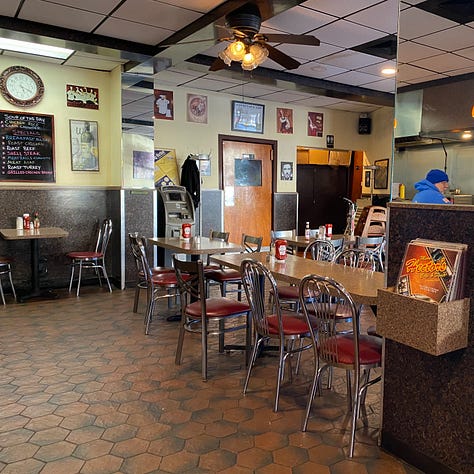
I chose a bar stool at the counter, ordered a cup of tea and had a nice exchange with the woman behind the counter. I eavesdropped on two big guys at the counter next to me who were yukking it up, interacting with the chatbot Gemini, asking her to translate Greek phrases and to describe what she looked like.
These guys were dressed in blue uniforms. They might have been federal technicians, but they could have been construction workers, drivers, guards or cops.
They weren’t meat packers. The last of Manhattan’s meatpacking plants closed in 2012. (There are still meat businesses, but no plants.)

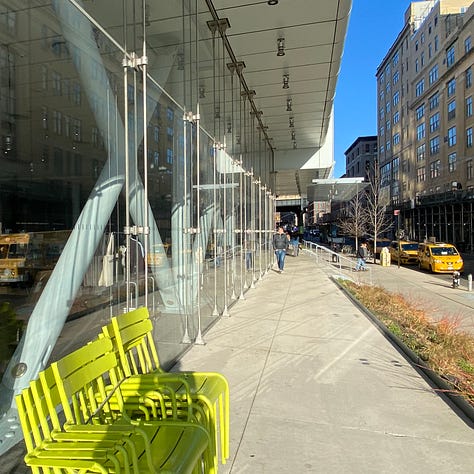
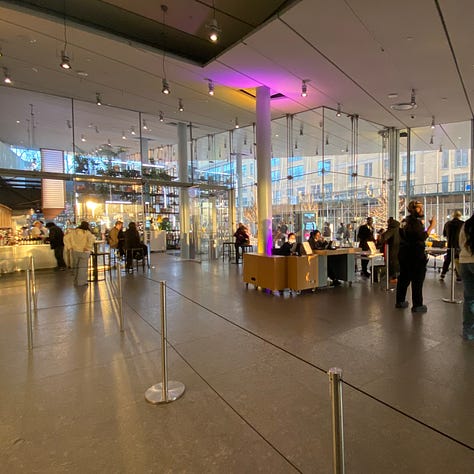
Today, Hector’s is nestled under The Highline, one of New York’s main tourist attractions. The diner is surrounded by designer stores and major art galleries.
Even though Hector’s is open 24 hours a day, it’s just as likely to feed tourists and Whitney Art Museum visitors as it is to serve road workers and taxi drivers.
Some of Hector’s regulars might also be Google employees. The company’s headquarters is just a few streets away. The Google building is 15 storeys high and occupies an entire city block.
Across the road from the Google building is The Chelsea Market. With its 55-plus food vendors open every day from 7am to 10pm – and selling everything from hand-stretched noodles to fresh oysters to green kaya toasts – one wonders if Chelsea and the Meatpacking District still need Hector’s Cafe and Diner.
More broadly speaking, does America still need diners?
Diners started serving simple, fast, comforting meals to Americans in cities and towns in the very late 1800s.
The first diners were dragged behind wagons. Later diners were converted railway carriages, purchased and delivered to site by rail.
Some people still call diners lunch cars.
The first diners opened early and closed late. They fed workers before and after their shifts. During the day, they served coffee, pancakes, burgers, hot dogs, shakes, steaks, fries and pie. Typical patrons were travelling salesmen, office workers, teenagers and retirees. People dining alone would sit at the long counter.
These days there are any number of fast food places that make and sell meals faster and cheaper than diners. A lot of them are open long hours, too.
The answer is probably this: No, America doesn’t need diners.
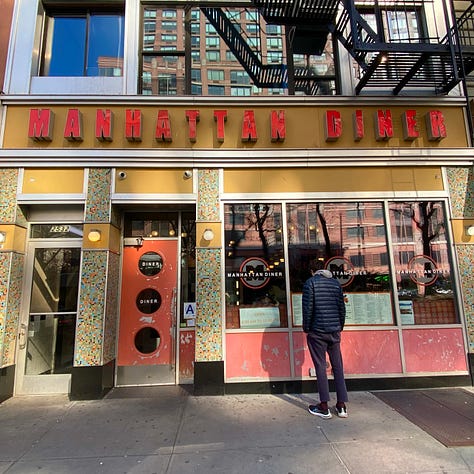


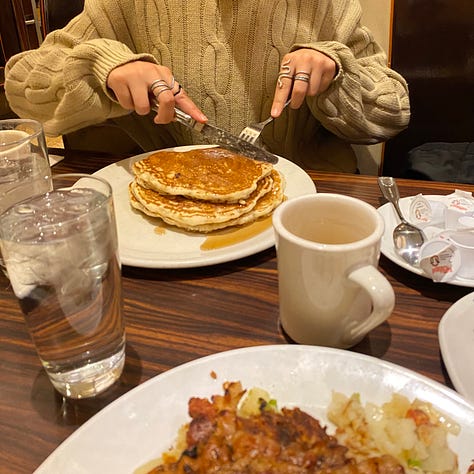
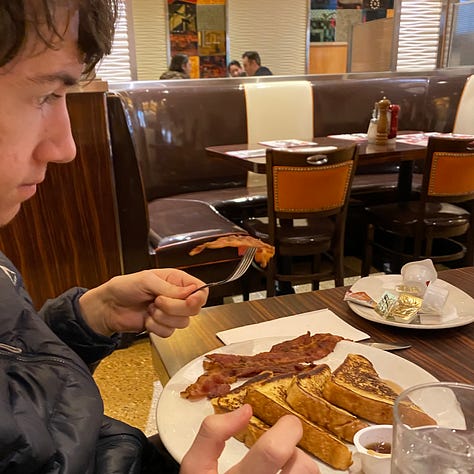
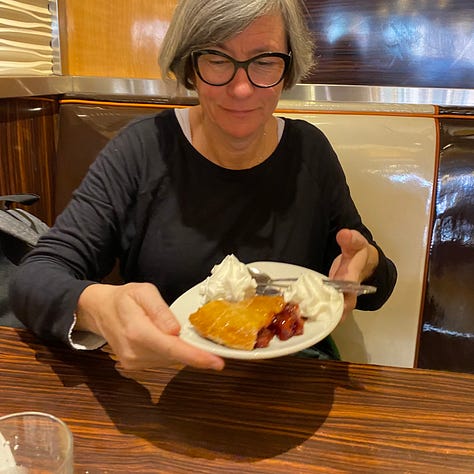
Does America still want diners?
Anyone who loves American movies wants diners to live on. The aesthetic is so distinctly American: the shiny metal exterior of the old diner; the tiled floors, fixed bar stools, sugar pourers, coffee pots and syrup jugs are as much a part of US movies as sunsets and close-ups.
And what about these iconic American foods? Stacks of pancakes, ice cream sundaes, hash browns and eggs-over-easy were served in diners first.
One of my favourite things, but I might be alone in this, is the long-suffering diner waitress of the movies.
She’s always in that drab-coloured, apron-included uniform (it’s always some shade of pink-plus-brown-plus cream, like strawberry, chocolate and vanilla milkshake stirred up together). She’s wearing flesh-coloured tights, white sneakers and she has a pencil and pad.
This waitress has a heart of gold, but she’s tired and bored and sassy.
I think American diners are a bit like that. They’ve been on their feet a long time, but there’s something real about them.
In the case of the waitress, it’s real kindness. In the case of diners, it’s real food and a real sense of home.
Diner food isn’t healthy and the home isn’t that perfect nuclear family home. But the pie is homemade and there’s nothing corporate about a plain metal napkin dispenser.
I like diners a lot. Even the new, cheffy ones. I’d rather be at a counter on my own or in a booth with a friend than standing on the street with my take-out.




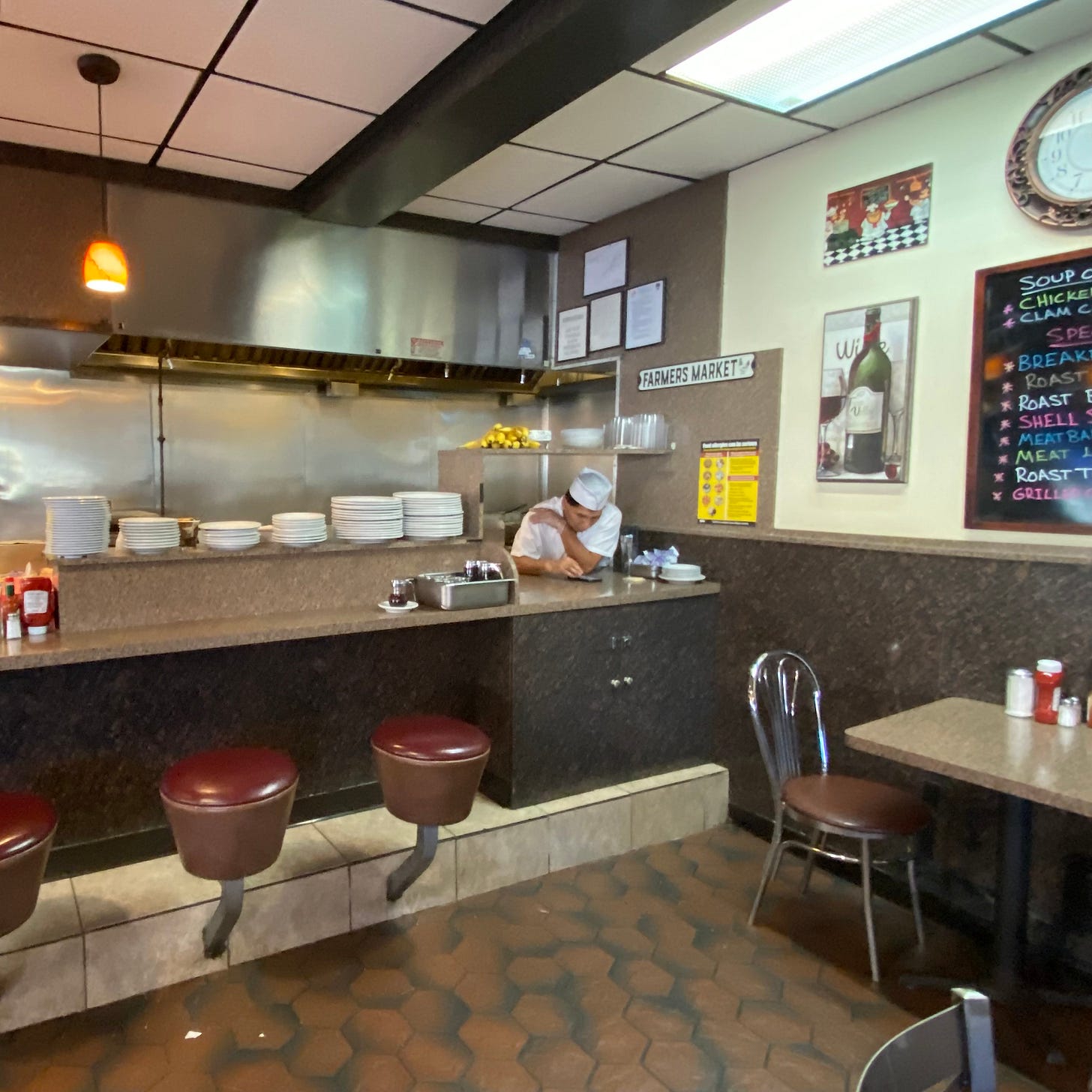
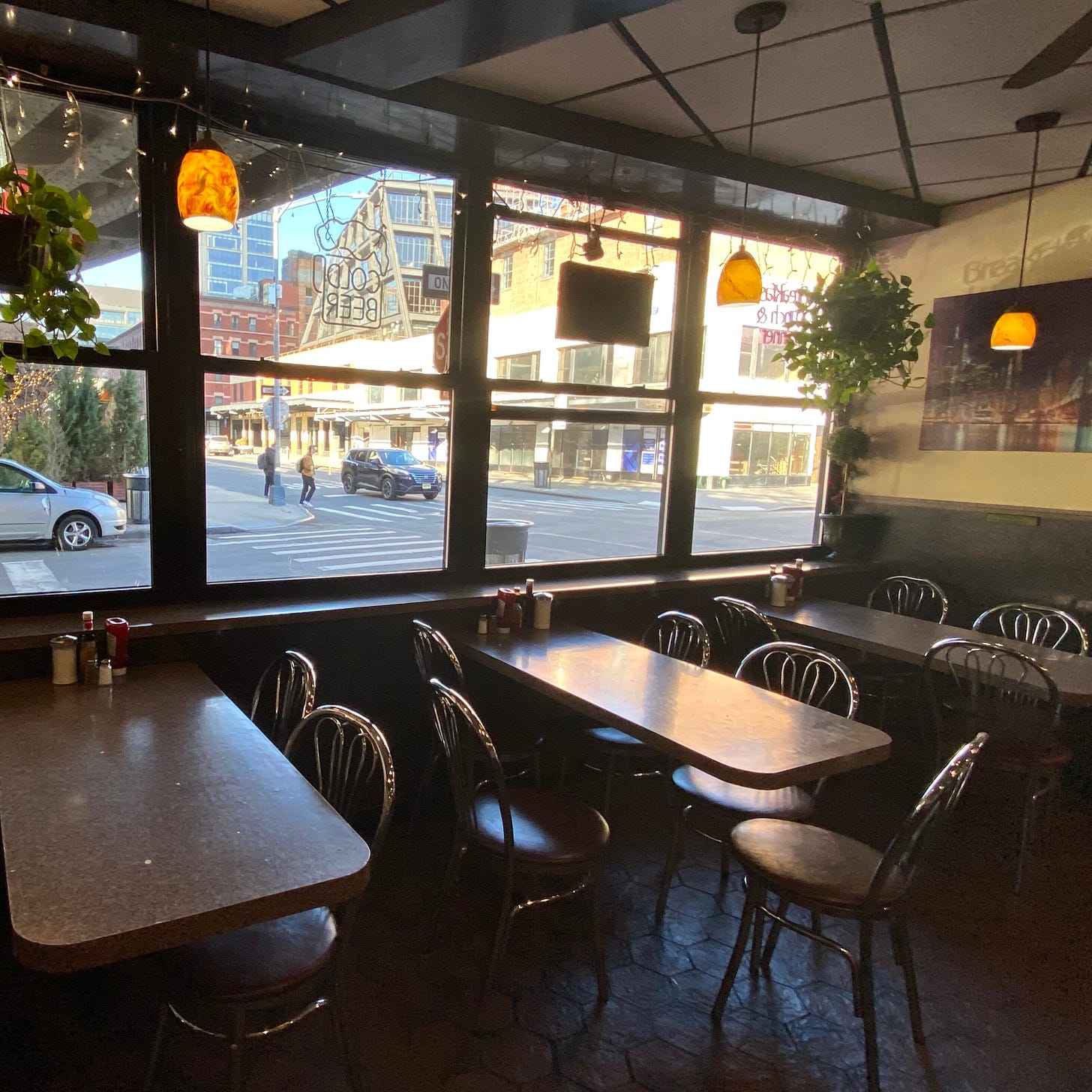
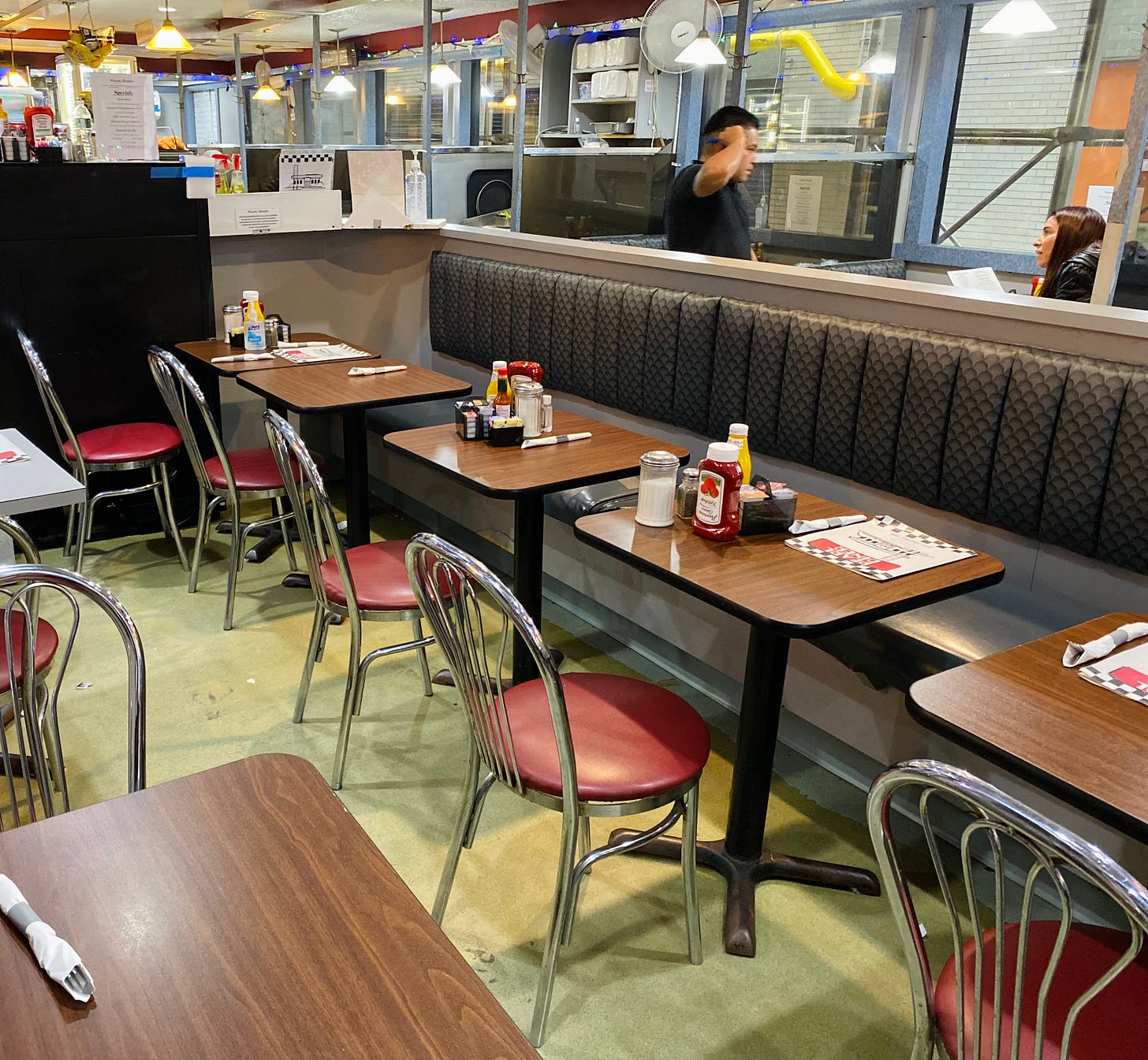
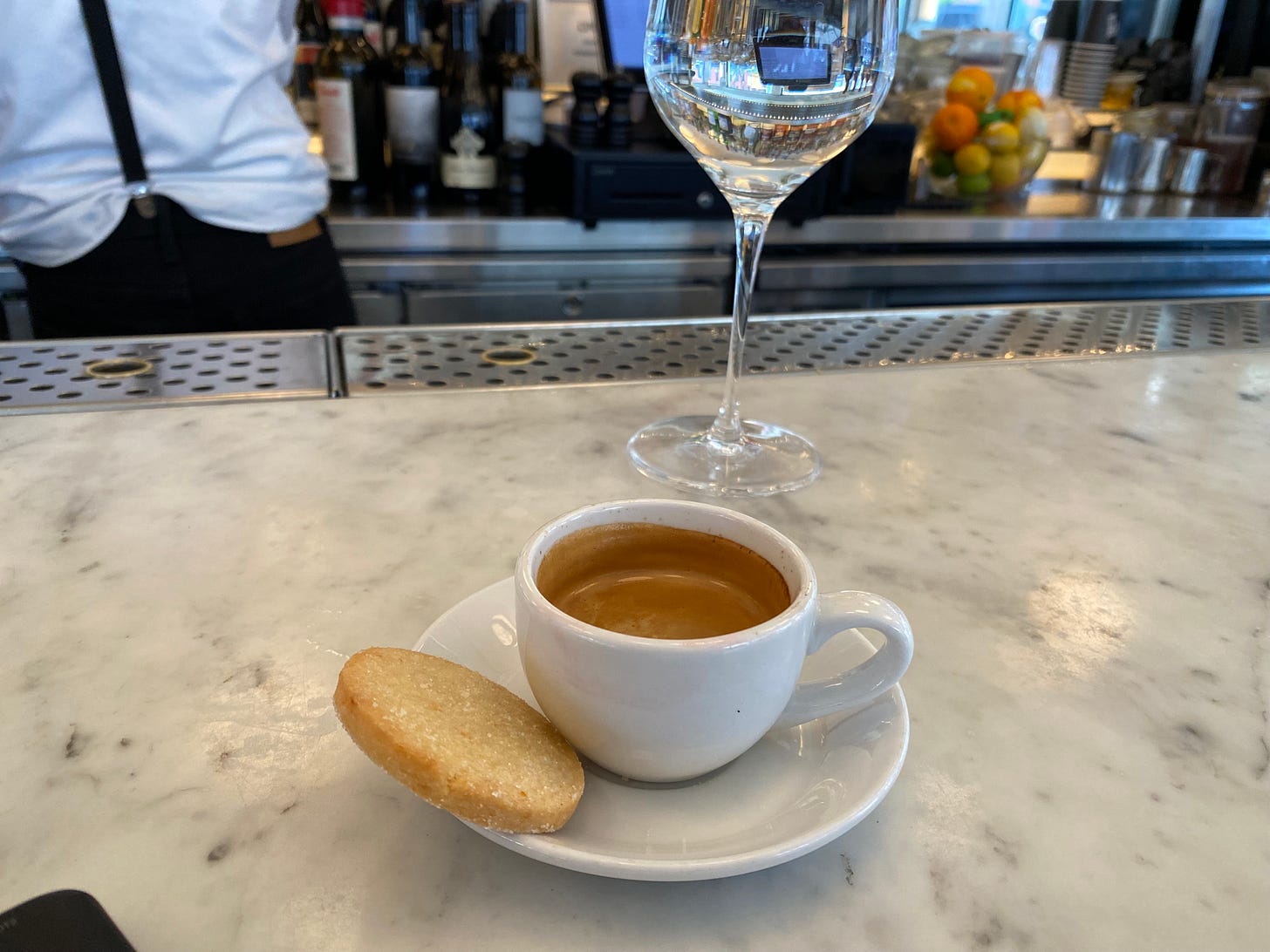
This was such a great read, Daisy. I love learning random things in story form.
More beautiful observation Daisy 🙏🏼❤️. And it makes me ridiculously happy to now know that breakfast at any time is part of America’s labour history. Not just-because.